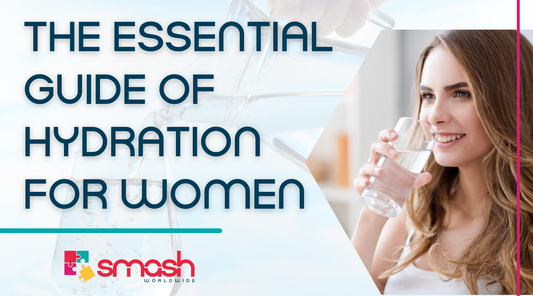What food additives are in your food?
Do you know what you are eating? You might say food, but are you really eating what you think you are? Many foods that are available in shops these days, are so highly processed that they nearly do not resemble food but are food like substances. Food companies, unfortunately tend to only care about their profit margins and not necessarily about the impact of the ingredients, on your long term health.
This is why I encourage everyone to really know what is in their food and one of the best way to do this is to cook it yourself and use minimally processed ingredients.
With the widespread use of artificial chemicals to enhance everything from taste and appearance to shelf life, you can no longer be sure that you know what is in your food just by looking at it.
What are food companies doing to your food, that you need to be aware of?
It is really important to understand what specific ingredients do (or don’t do) and how to read a food label. I always say to people, if you don’t recognise the name of the ingredient, or there is a list the length of your arm, put the “food” back on the shelf.
By learning to read food labels, and knowing what to look out of, you take the power of your health, back into your hands.

Food additives
A prime example of "hidden" ingredients are food additives.You have probably heard of them, but do you actually take the time to find out what they are, which ones appear in your food and how they might affect your health?
If you are interested in long term health, and living a more natural lifestyle, it is something that you should start to understand.
By taking the time to reduce your exposure to potential toxins/additives, and understanding the impact of these, you are on the right road to living a healthier life.
There is always controversy when you start debating the pros and cons of these additives, but I do believe that knowledge is power, so here is some information that you may find of benefit.
The basics facts
Food additives are substances that manufacturers add to foods. For example, to preserve flavour, keep the food fresher for longer and to enhance taste (to encourage you to eat more which means more profits for them), texture and appearance.
Thankfully, not all food additives are bad, despite the negative links with the phrase. Some are actually very natural. For example, vinegar that is used for pickling, and salt that is used to preserve meat. These additives have been used for centuries, and are natural methods that won’t have any negative impact on your body.
Similarly, there is a common belief that processed foods automatically contain food additives, but this is not always the case. For example, long-life milk is processed, yet it doesn’t actually require added chemicals to prolong its shelf life.
The vast majority of additives used by food companies nowadays are unfortunately synthetic or man-made and many have come about as a result of the increasing demands of modern living and the changing palates of younger generations.
Think about it, when someone is looking for a late night snack, they tend to go for something that is either highly salted or sweetened to satisfy them. Also, in today's busy shopping environments and saturated food markets, the brighter, highly coloured foods are normally the ones that get picked (especially by children). Children are being marketed to from a very young age, that food needs to be fun to eat, nice to look at and tasty - think of the wording ... “Happy Meal,” “Celebrations”, “Fun Size” etc, etc
Unfortunately, the nature of our modern diet and lifestyle has resulted in fewer and fewer home-grown foods, less people cooking for themselves, and an increase in the number and type of processed/refined foods. As a result, this has led to an increase in the number of additives used in foods - both natural and synthetic. Therefore it is very important to arm yourself with knowledge about them, to help ensure the long term health of you and your family.
Categories of additives
Preservatives, colourings and flavourings are some of the best known additives. However, there are actually a number of other categories, each of which is tailored to a specific purpose. These include:- acids
- acidity regulators
- anti-caking agents
- anti-foaming agents
- antioxidants
- bulking agents
- colour retention agents
- emulsifiers
- flavours
- flavour enhancers
- flour treatment agents
- glazing agents
- humectants
- tracer gas
- stabilisers
- sweeteners
- thickeners
In fact, there are currently over 3000 additives used in food across the world, most of which are synthetic! We need to become more aware of what is in the food that we are eating.
Reading Food Labels
If you are unsure whether or not a food contains additives, check the ingredients list on the label. If there are ingredients in there that sound like a chemistry experiment, or you can’t pronounce it, then you are probably best to avoid that food.However it is also important to be aware of the fact, that some listed ingredients may contain hidden food additives themselves, without those necessarily being specified. For example, a product may contain margarine, which in turn contains additives, but only “margarine” will be listed as an ingredient on the label. Personally, I don’t eat anything that has margarine in it as once you know how it is made, you really don’t want that in your body.
It is great to get to know the more common food additives, ready to spot them when you are doing your weekly shopping.
Here are some of the most notorious food additives - E-numbers.
E-numbers - dangerous or not?
E-numbers get a lot of attention in the media for being unhealthy but, once again, the reality is a little different to what is often portrayed. The word itself conjures up images of something that we really don’t want in our food, but are they really as bad as we are led to believe?
Well, let's investigate as to what they really are.
After an additive has been tested and approved for use in foods in Europe, it is given a classification known as an “E-number” (a number with an “E” prefix, e.g. E100), for the regulation purposes and consumers knowledge. The “E” stands for Europe and countries outside Europe just use the number without the “E” in front of it. In reality, it is simply a systematic way of identifying different food additives by replacing the chemical name or common name of the food by an E-number.
The important to know, is that even natural additives will be labelled with an “E” prefix - so don't automatically discount a food which otherwise looks healthy. Knowledge is power, so know your E-numbers!
Check out a list of current E-numbers in the UK and Ireland. It is quite mind blowing when you see what is on there. A copy of this and my recommendations on what to avoid are in the SMASH Academy.
Are food additives safe for your long term health?
This is a quite a controversial question and one that has not been answered satisfactorily to date. However, my gut instinct says that filling our bodies with synthetic chemicals cannot be as healthy as eating a natural, minimally processed, whole foods, and unfortunately they may even be detrimental to your health, by adding to your toxic load.In the second half of the 20th century, there has been a significant increase in the use of food additives of varying levels of safety. This has necessarily led to the introduction of a wide range of laws worldwide, regulating their use. Some countries laws are stricter than others, so be aware of the food that you are eating, in the country that you are eating it
The long-term effects on the body, of continually eating a food with combination of different food additives are, unfortunately, currently unknown. This is why we have the need for regulation.
This concern is largely due to the fact that most food additives are tested in isolation, rather than in combination with other additives. However, what is becoming clear, is that some people are highly sensitive to them and suffer reactions as a result of their consumption.
These reactions can include:
- headaches
- skin irritations (itching, rashes, hives etc)
- digestive disorders (including diarrhoea and abdominal pains)
- respiratory problems (like asthma, rhinitis and sinusitis)
- allergic reactions and anaphylactic shock
- behavioural changes (such as mood changes, anxiety and hyperactivity).
Research undertaken in 2007 by Britain’s Food Standards Agency and later published by the British medical journal “The Lancet”, provided evidence that a mix of additives commonly found in children’s foods serves to increase the mean level of hyperactivity. Similarly, in 2008, AAP Grand Rounds (the American Academy of Pediatrics) published a study that concluded that a low-additive diet is a valid intervention for children with ADHD.
Bearing all this in mind, it is important to remember that all foods are made up of chemicals, and some people can react to natural foods as well. For example, people with food allergies and intolerances can often be sensitive to chemicals found naturally in certain foods, such as dairy, nuts or shellfish. However, it is always a good idea to opt for natural ingredients over synthetic ones and to adopt an organic lifestyle wherever possible for maximum benefit to your health.

Food Additives to be aware of:
Some of the following additives are most likely to cause a negative reaction include:Flavour enhancers - A well-known example is monosodium glutamate (MSG E621). They are commonly found in crisps, instant noodles and microwave and takeaway foods.
Aspartame - E951 - This is a synthetic artificial sweetener, which is made of phenylalanine, aspartic acid and methanol (a type of alcohol). When broken down in the body, methanol forms formaldehyde, formic acid (found in the venom of ants and bees) and diketopiperazine - all quite nasty substances! Aspartame is found in diet drinks, yoghurts and sugar-free items (like chewing gum).
Sulphites - There are 10 E numbers in this category. This group of additives is often found in dried fruit, desiccated coconut, processed meats, cordial and wine. They have been known to trigger asthma attacks in sensitive individuals. E220 - sulphur dioxide is permitted to be added to organic foods.
Propionates - E281 - E283 - This type of additive can occur naturally in foods (e.g. certain types of cheese). They are also common in bread and used to prevent mould and mildew forming. The effects are dose-related and may range from migraines, bed-wetting, nasal congestion and racing heart to memory loss, eczema and stomach ache.
Antioxidants - Do not get confused with the naturally occurring antioxidants found in whole foods like fruit and vegetables and which are widely used to support good health and immunity. Antioxidants in the context of food additives, refer to those that are synthetic chemicals which are added to food, and may therefore have a harmful effect on the body. Examples include Butylated hydroxytoluene (BHT) E321 and Butylated hydroxyanisole (BHA) E320, which are added to prevent fat spoilage. They are commonly found in margarine, biscuits, crisps and muesli bars. They have been linked to health conditions such as insomnia, tiredness, asthma and even learning difficulties.
Colours - The most common offenders in this category of additives are tartrazine (E102) and annatto (E160b). Synthetic colourings have been linked to allergic reactions, as well as learning and behavioural problems in children.
As you can see the area of food additives is very complex and can be quite confusing. In order to minimise your exposure to these kinds of chemicals (and in my opinion toxins in many cases), get into the habit of eating real food that is minimally processed. The closer you can get to the production of your food the better it will be for your body. This way you are lowering your exposure to these chemicals and your body will not have to deal with them.
By eating real food you are giving your body the best opportunity to function at its optimal capacity and in doing so you can SMASH your health goals. Eating The SMASH Way can reduce your exposure to food additives and improve your health. Check it out here




